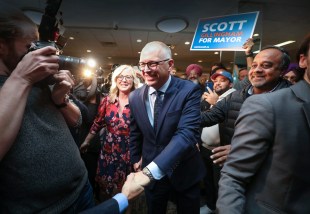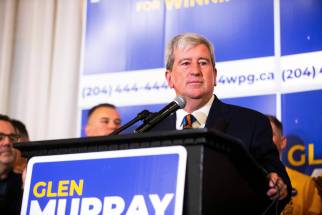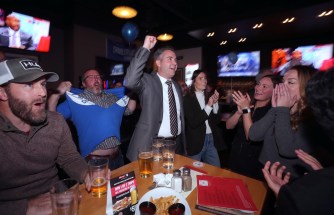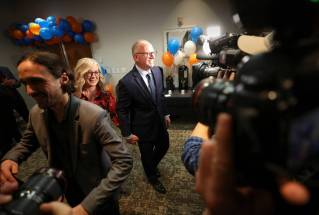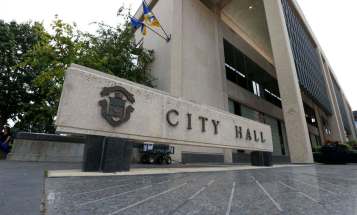Nothing fancy, but Gillingham will keep this car on the road New mayor's no-frills platform takes mayoralty with smallest vote total in more than half-century
Read this article for free:
or
Already have an account? Log in here »
To continue reading, please subscribe:
Monthly Digital Subscription
$0 for the first 4 weeks*
- Enjoy unlimited reading on winnipegfreepress.com
- Read the E-Edition, our digital replica newspaper
- Access News Break, our award-winning app
- Play interactive puzzles
*No charge for 4 weeks then price increases to the regular rate of $19.00 plus GST every four weeks. Offer available to new and qualified returning subscribers only. Cancel any time.
Monthly Digital Subscription
$4.75/week*
- Enjoy unlimited reading on winnipegfreepress.com
- Read the E-Edition, our digital replica newspaper
- Access News Break, our award-winning app
- Play interactive puzzles
*Billed as $19 plus GST every four weeks. Cancel any time.
To continue reading, please subscribe:
Add Free Press access to your Brandon Sun subscription for only an additional
$1 for the first 4 weeks*
*Your next subscription payment will increase by $1.00 and you will be charged $16.99 plus GST for four weeks. After four weeks, your payment will increase to $23.99 plus GST every four weeks.
Read unlimited articles for free today:
or
Already have an account? Log in here »
Hey there, time traveller!
This article was published 26/10/2022 (1137 days ago), so information in it may no longer be current.
Winnipeg — meet the mechanic.
It would be hard to call Scott Gillingham a visionary. He’s not a bold or risky political leader. His campaign was a mash-up of tried-and-true municipal campaign planks. Heck, his biggest idea is building bigger roads.
But in capturing the mayoral election Wednesday night, he demonstrated a grasp on how to take the city he has helped run for the last eight years as a city councillor and make it better.
Think of him as that really solid auto mechanic you love to tell other people about. He’s not going to turn your car into an F1 race car, or trick it out to compete with the Sunday-night cruisers. He’s the guy who will keep your car safely and reliably on the road.
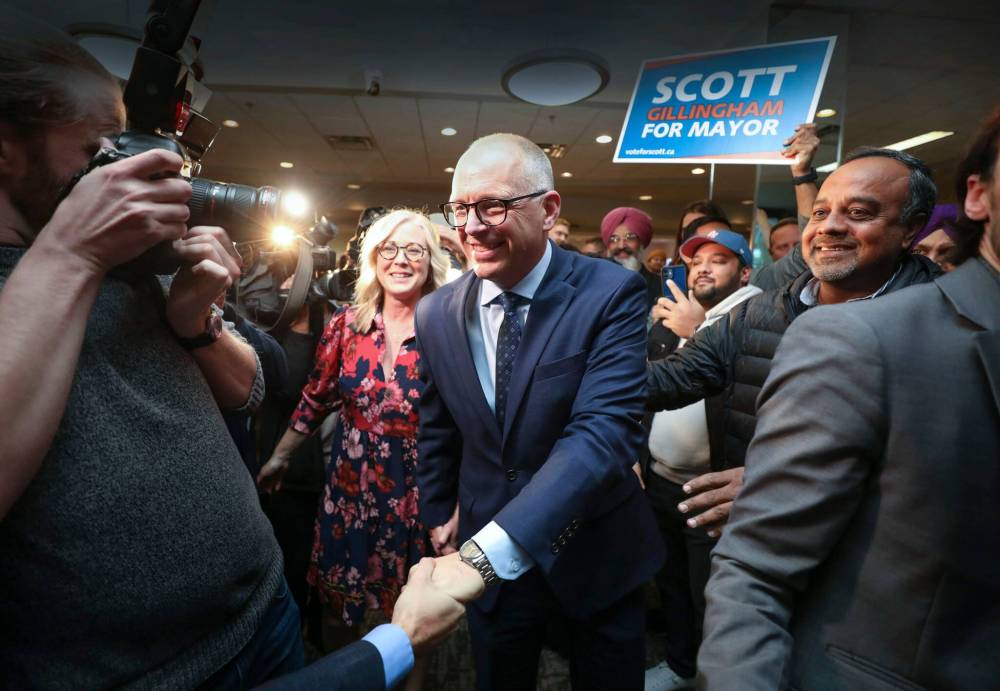
The big question for Gillingham — and for the citizens of Winnipeg — is whether fixing what we have is enough to get us to where we, as a community, need to go.
In fact, the strongest message we might take from this election is that seven in 10 voters in the mayoral election were not convinced Gillingham was the right person for the job.
A win is a win in politics, but Gillingham is, no doubt, aware that this is the closest, thinnest mayoral victory in Winnipeg history.
With only 27.5 per cent of the popular vote — roughly 54,000 total votes — Gillingham had the smallest vote total and slimmest share of total turnout of any winning mayoral candidate since 1971, when Unicity (the amalgamation of the old City of Winnipeg and 11 smaller surrounding municipalities) was created.
Prior to this year’s vote, the fewest votes ever registered by a winning mayoral candidate was Robert Steen (69,818) in 1977. With a roughly 4,000-vote advantage over Glen Murray, Gillingham registered the second-smallest winning margin of all time.
How exactly did this election get so tight? Gillingham and Murray were the true front-runners in the campaign, with Murray holding a commanding lead in pre-election polling over the summer. With the race now concluded, the narrative of this election will be largely told by the strength of the other, non-winning candidates.
Kevin Klein and Shaun Loney may not have come close to winning, but they each won about 15 per cent of the total vote, and together pulled more than 57,000 votes, a remarkably strong total that exceeded that accumulated by Gillingham.
Candidates that showed well in past elections, including Robert-Falcon Ouellette (2014) and Jenny Motkaluk (2018), could not capture their past magic. Still, together they earned the support of about 25,000 Winnipeggers.
Low voter turnout was another factor contributing to how tight the final tally was.
Although the official counts will not be available for several days, the unofficial numbers from Wednesday night showed that roughly 194,000 of the 521,000 registered voters in the city cast a ballot for mayor. That is a woeful 37.4 per cent turnout, the lowest ever in the Unicity era.
An exceedingly tight margin of victory in an election with historically low turnout is not the kind of backstory that Gillingham wants to carry through his first four years as mayor. He will need quick wins, projects and policies that show progress. Lamentably, his campaign doesn’t contain a lot of potential for those kinds of wins.
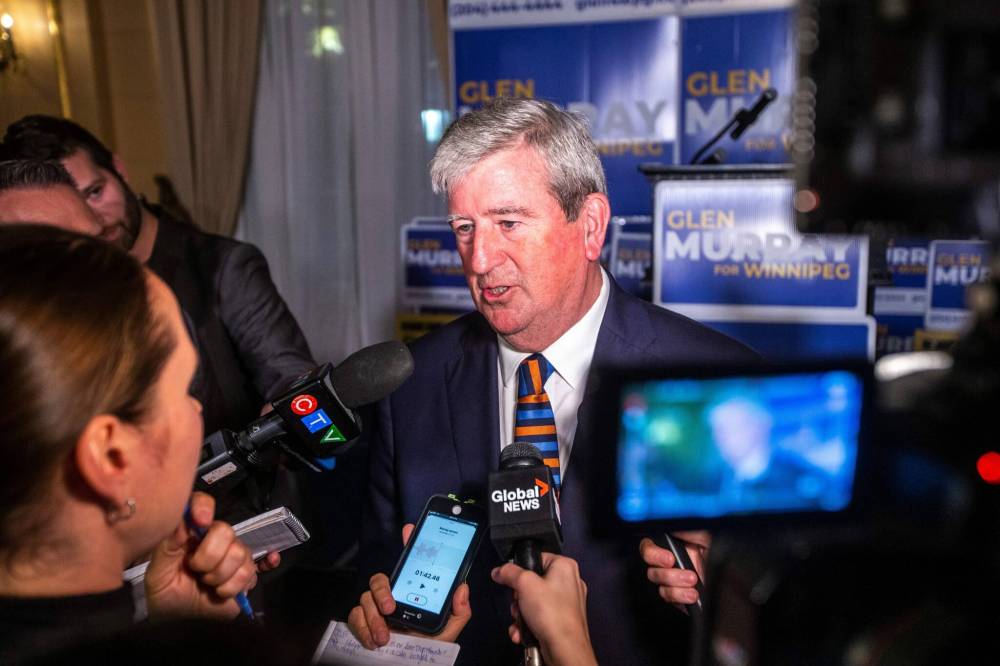
His biggest and boldest idea was a four-year dedicated tax increase to help pay for the extension of Chief Peguis Trail and widening of Kenaston Boulevard. Although his honesty about the need to generate additional revenue is noble, his single-minded fixation on the city’s roads budget is old and outdated thinking. Both of his road mega-projects are unqualified losers that have — to date — failed to attract matching funds from the federal and provincial budgets.
On most of the other high-profile challenges facing the mayor, Gillingham’s campaign is a triumph in understatement and pragmatism. On things such as public safety, downtown redevelopment and affordable housing, Gillingham is mostly supportive, with no real plans to make any significant changes.
Gillingham wants to turn more downtown and Exchange District alleys into arts and culture attractions, and will fund more active-transportation routes to help link existing bike paths and low-speed arteries together for a more seamless experience. But on just about everything else, it’s commitments to study, consult and devise solutions that will arrive sometime in the non-specific future.
In so many ways, Gillingham is exactly the kind of mayor that Winnipeg deserves. Voters here eschew bold ideas, as witnessed by the decision four years ago by suburban Winnipeggers with no skin in the game to smite a proposal to open Portage and Main to pedestrians. How afraid were the 2022 mayoral candidates of this ultimately modest proposal? Of all the candidates, only Rana Bokhari and Shaun Loney waded into that minefield.
Ultimately, a risk-averse city will end up with risk-averse mayor. It’s as inevitable as icy ruts on residential streets in February.
One can only hope that once Gillingham begins to fix the city we have, he finds opportunities to turn it into the city it needs to be.
Time to grab those wrenches and get to work.
dan.lett@winnipegfreepress.com

Born and raised in and around Toronto, Dan Lett came to Winnipeg in 1986, less than a year out of journalism school with a lifelong dream to be a newspaper reporter.
Our newsroom depends on a growing audience of readers to power our journalism. If you are not a paid reader, please consider becoming a subscriber.
Our newsroom depends on its audience of readers to power our journalism. Thank you for your support.
History
Updated on Thursday, October 27, 2022 9:48 AM CDT: Corrects typo
Updated on Thursday, October 27, 2022 11:53 AM CDT: Corrects candidates' references to Portage and Main debate












